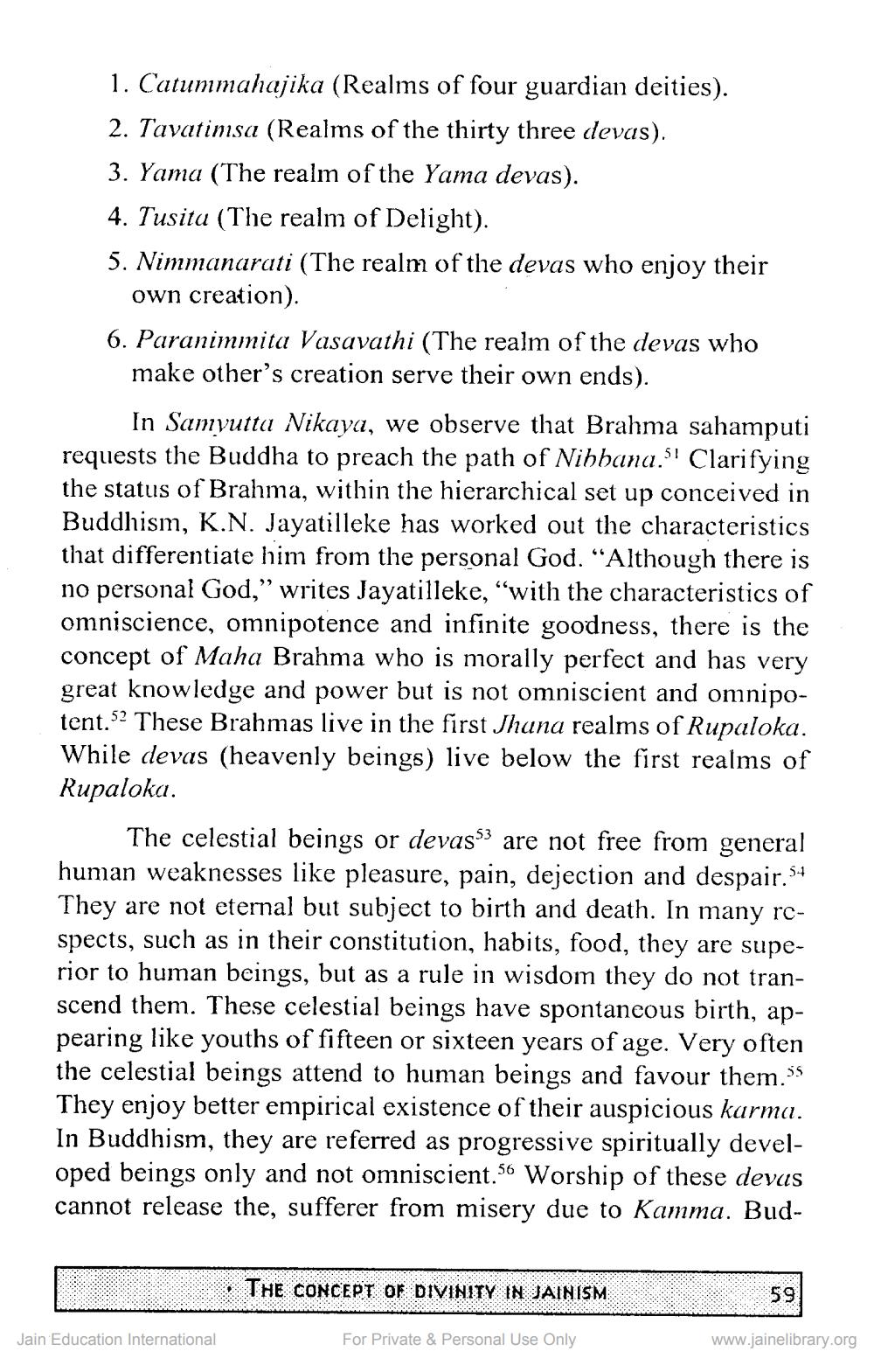________________
1. Catummahajika (Realms of four guardian deities).
2. Tavatimsa (Realms of the thirty three devas).
3. Yama (The realm of the Yama devas).
4. Tusita (The realm of Delight).
5. Nimmanarati (The realm of the devas who enjoy their own creation).
6. Paranimmita Vasavathi (The realm of the devas who make other's creation serve their own ends).
In Samyutta Nikaya, we observe that Brahma sahamputi requests the Buddha to preach the path of Nibbana. Clarifying the status of Brahma, within the hierarchical set up conceived in Buddhism, K.N. Jayatilleke has worked out the characteristics that differentiate him from the personal God. "Although there is no personal God," writes Jayatilleke, "with the characteristics of omniscience, omnipotence and infinite goodness, there is the concept of Maha Brahma who is morally perfect and has very great knowledge and power but is not omniscient and omnipotent.52 These Brahmas live in the first Jhana realms of Rupaloka. While devas (heavenly beings) live below the first realms of Rupaloka.
The celestial beings or devas53 are not free from general human weaknesses like pleasure, pain, dejection and despair.5+ They are not eternal but subject to birth and death. In many rcspects, such as in their constitution, habits, food, they are superior to human beings, but as a rule in wisdom they do not transcend them. These celestial beings have spontaneous birth, appearing like youths of fifteen or sixteen years of age. Very often the celestial beings attend to human beings and favour them.55 They enjoy better empirical existence of their auspicious karma. In Buddhism, they are referred as progressive spiritually developed beings only and not omniscient. 56 Worship of these devas cannot release the, sufferer from misery due to Kamma. Bud
Jain Education International
THE CONCEPT OF DIVINITY IN JAINISM
51
For Private & Personal Use Only
59
www.jainelibrary.org




